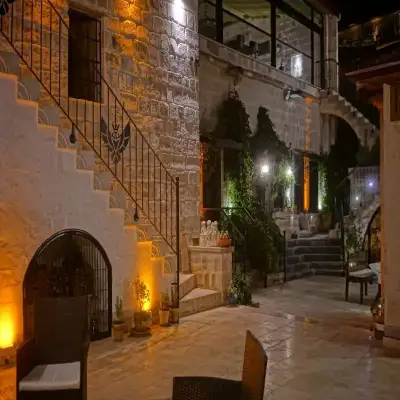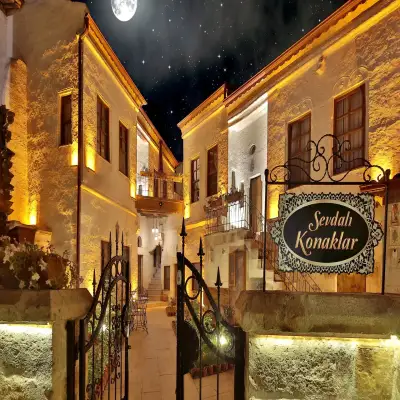
Avanos Guide
Avanos, founded on both sides of the Kızılırmak River, whose name in ancient times was Hallys, is one of the tourism centers of Cappadocia. Located 18 km. east of Nevşehir, this charming district was named “Zu-Winasa” according to some historians and “Nenassa” according to others during the Hittite period. It was called “Venessa” during the Greek and Roman periods and “Vanote” during the Byzantine period. It is suggested that it was named after Evranos Bey, one of the important commanders of the Seljuks; this name was changed to Avanos during the Ottoman period. According to the historian Strabo in his book “Geographika” written between 58 BC and 25 AD, Venessa was the third politically and religiously important settlement in the Kingdom of Cappadocia after Kayseri (Mazaka) and Kemerhisar (Tyana or Eusebia: an ancient city near Niğde). The same work also mentions the existence of the cult of the gods Zeus and Uranos.
The 32 m. high Çeç tumulus near Avanos is thought to be a king's tomb like Gordion, Mount Nemrut and Karakuş (Adıyaman). However, we do not have much information about the tumulus since excavations were not carried out.In addition, a sarcophagus was found on the east bank of the Kızılırmak River in the 1970s; however, it is not known to whom the tomb belonged to, as thieves had previously opened the sarcophagus and taken its contents away.As in almost all settlements in Cappadocia, Avanos and its surroundings increase their importance with the Christians who fled Roman persecution and settled in the region. The Yamanlı Church, one of the oldest churches in Cappadocia, was opened for worship a few years ago with a decision taken by the Avanos Municipality with a ceremony attended by representatives from the Vatican and offered to the service of religious groups coming to the region.Avanos has gained a reputation for pottery making. The pottery making in the region, which has existed since ancient times, has been inherited by the people of Avanos.
...Even the blind know the way to Avanos;
... As Abdullah Kılıç so eloquently expresses, the people of Avanos are identified with the production of pottery and ceramics. Almost everyone knows this profession, whether educated or uneducated. It is said that there are more than 200 pottery workshops. It is also the place where carpet weaving is most common.
Cavusin, 3 km. on the way from Goreme to Avanos, you will see a cute, cute, tiny village on your right. From a distance it looks like there is nothing worth seeing, but when you enter the village, you come across the mostly demolished houses of the old village. The old village has a mosque, which was used until recently, half carved out of rock and half built with cut stones. To the left of the mosque, when you go up through the demolished houses, there is a very beautiful view in the direction of Avanos. There is also a church, which is considered to be the largest church in the region, which unfortunately has been largely destroyed because it is not under any protection.
Çavuşin Church (Nicephoros Phocas) is located on the Göreme-Avanos road, 2.5 km from Göreme. The narthex of the church, which has a very high single nave, barrel vault and three apses, has been destroyed.
For accommodation suggestions, you can check our Avanos Hotels page.



